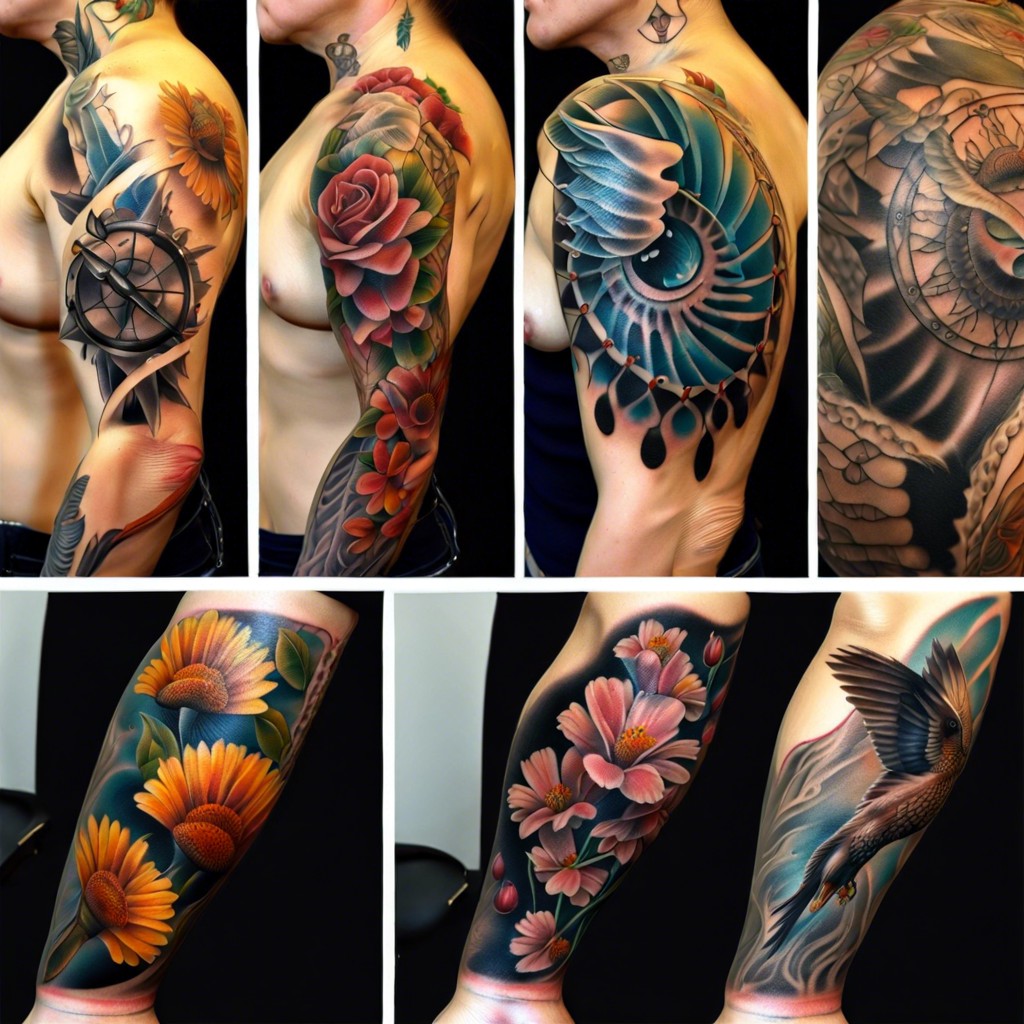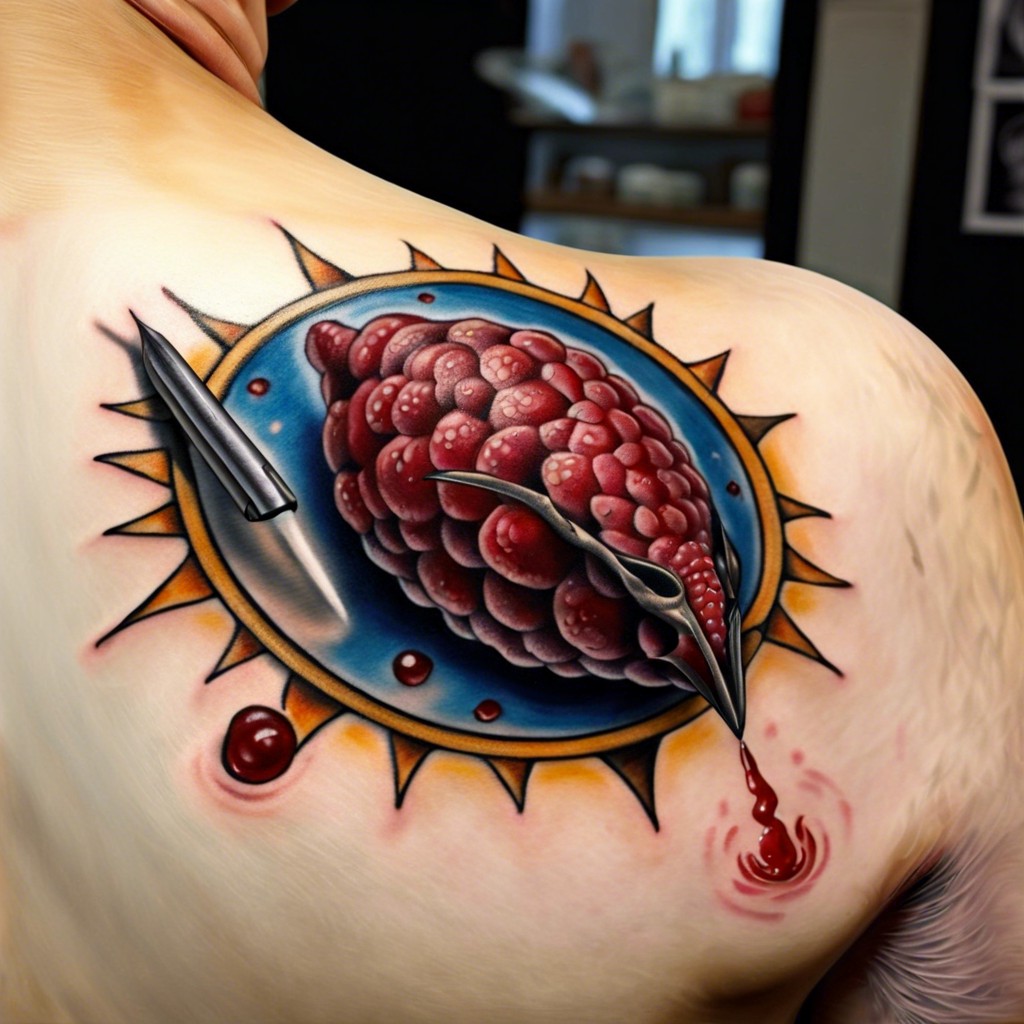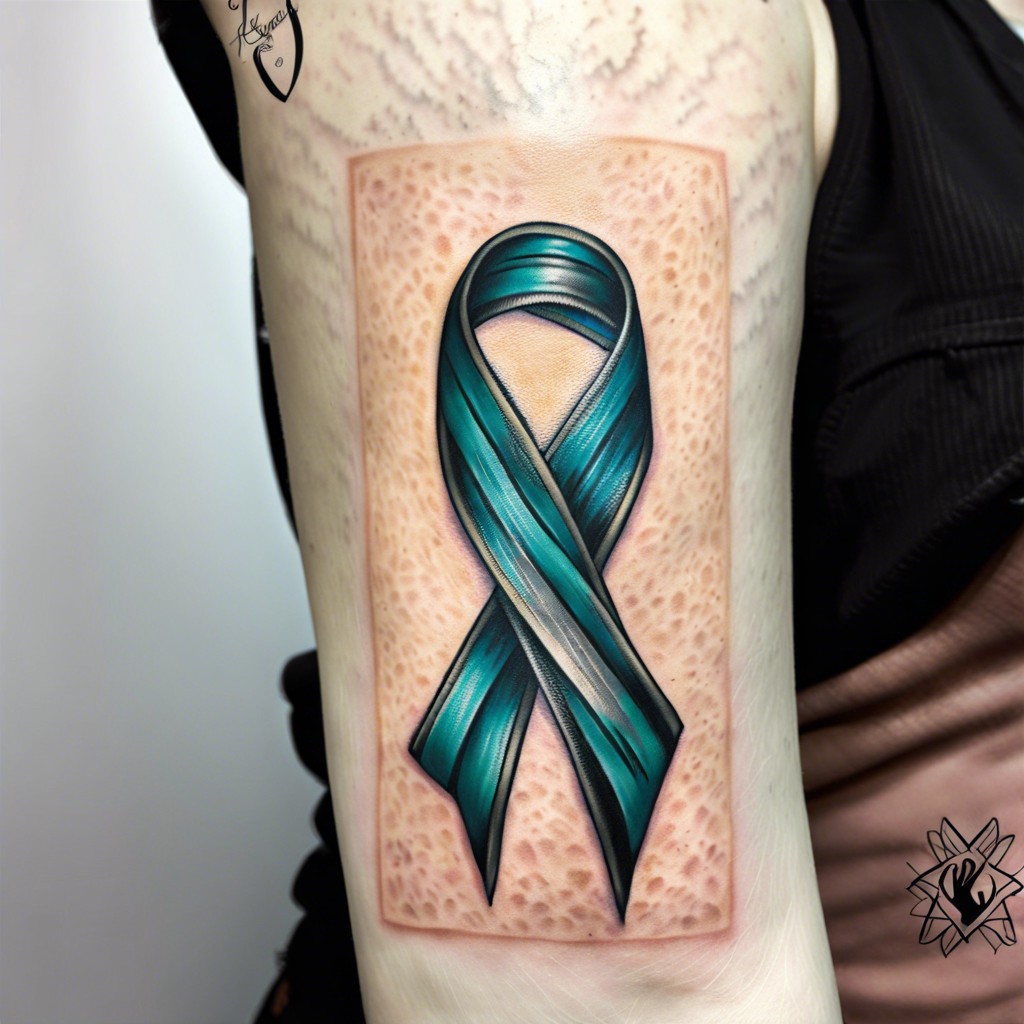Discover how the tattoo healing process unfolds and learn effective aftercare tips to ensure your new ink settles in perfectly.
Stages of Tattoo Healing

The healing process typically unfolds in four distinct phases: initial redness and swelling, followed by inflammation and itching, then crusting and scab formation, and finally scab shedding to reveal healed skin.
Each phase marks a critical progression in skin repair and barrier formation, ensuring the tattoo’s longevity and vibrancy.
Proper care throughout these stages is crucial for optimal tattoo preservation and avoiding complications.
Immediate Aftercare Recommendations

Begin by gently cleaning your new tattoo with fragrance-free soap and lukewarm water. Apply a thin layer of hypoallergenic moisturizer to ensure the area remains hydrated.
Remember to cover the tattoo with a breathable bandage for the first few hours, as advised by your tattoo artist.
Scabbing and Peeling

During the healing phase, it’s normal for a tattoo to start scabbing and peeling; this is part of the skin’s natural regeneration process. It’s critical to resist the urge to pick at the scabs, as doing so can lead to ink loss and damage to the design.
To manage peeling, gentle cleansing and application of fragrance-free moisturizer can aid in the comfort and preservation of the tattoo.
Importance of Moisturizing

Proper moisturizing maintains the tattoo’s vibrancy and aids in preventing cracks and excessive dryness that can distort the design. It facilitates the natural healing process of the skin, allowing the tattoo to heal evenly and with minimal irritation.
Selecting the right moisturizer, free from irritants like fragrance or alcohol, is crucial to ensure it complements the skin’s recovery instead of hindering it.
Signs of Proper Healing

A well-healing tattoo typically exhibits a consistent fading of redness and a reduction in swelling around the area.
The emergence of flaking skin without signs of pus or excessive bleeding indicates a normal healing process.
An evenly distributed color that becomes more vibrant as the healing progresses is a positive sign of proper tattoo recovery.
Infection Warning Signs

Redness that spreads beyond the tattoo, intense pain, and swelling are telltale signs of a possible infection. A foul odor or discharge oozing from the tattooed area also indicates that it’s time to consult a healthcare professional. Persistent fever and chills accompanying these symptoms should never be ignored, as they can signify a serious infection.
Impact of Picking Scabs

Picking at scabs disrupts the tattoo’s healing process, potentially leading to ink displacement and patchy designs. It also increases the risk of introducing bacteria, which can cause infections and compromise the vibrancy of the tattoo.
To preserve the integrity of your tattoo, it’s vital to resist the urge to scratch or pick at healing skin.
Long-term Tattoo Care

Maintaining the brilliance of your tattoo extends far beyond the initial healing stage; regular moisturizing and sun protection are essential for longevity.
Gently cleanse the tattooed skin and apply sunblock to prevent fading caused by UV rays.
Keeping the area hydrated and avoiding harsh chemicals can preserve the vibrancy of your ink for years to come.
Healing Times By Tattoo Size

Small tattoos generally heal faster, often within two weeks, due to their limited skin disruption.
Medium to large designs, with more intricate details, can take up to a month or more to fully heal.
It’s crucial for individuals to adhere to aftercare instructions irrespective of size to ensure optimal healing.
Effects of Clothing On Healing

Tight clothing can irritate a new tattoo and impede the healing process, increasing the risk of scarring. Breathable, soft fabrics allow air circulation and help prevent infection by reducing moisture buildup.
It’s advised to wear loose-fitting clothes that don’t rub against the tattooed area to promote optimal healing.
Sun Exposure Considerations

Direct sunlight can cause significant damage to a new tattoo, fading the color and delaying the healing process.
Protecting the healing tattoo from UV rays with clothing or special sunscreen designed for tattoos is essential.
Limit sun exposure during the initial weeks to ensure color retention and prevent sunburn-related complications.
Activities to Avoid During Healing

During the healing period, it is crucial to avoid submerging your tattoo in water such as baths, swimming pools, or hot tubs, as this can lead to infections.
High-intensity activities that cause excessive sweating can also hinder the healing process, potentially causing the ink to blur or fade.
Minimize contact with pets and dirty surfaces to reduce the risk of contamination and irritation to the sensitive tattooed area.
Role of Diet and Hydration

Proper nutrition can boost the immune system, aiding in quicker tattoo recovery and reducing infection risk.
Staying well-hydrated is essential as it ensures skin remains supple and can heal without unnecessary delays.
Foods rich in vitamins A and C, along with zinc, can particularly enhance the skin’s regenerative processes during tattoo healing.
Moisturizer Selection Tips

Choose a fragrance-free and alcohol-free moisturizer to prevent irritation during the healing process. Opt for a lotion that’s specifically formulated for sensitive skin to ensure it’s gentle on your new tattoo.
Look for products containing natural, healing ingredients like aloe vera or shea butter to aid in soothing and repairing the skin.
When to Seek Professional Help

If your tattoo oozes green/yellow pus or the redness extends beyond the tattoo area, it’s time to consult a professional.
Unusual swelling or severe pain after the initial few days can signal an infection requiring medical attention.
Persistent rash or allergic reactions around the ink also merit a trip to the healthcare provider.
Get inspired by more ideas:





